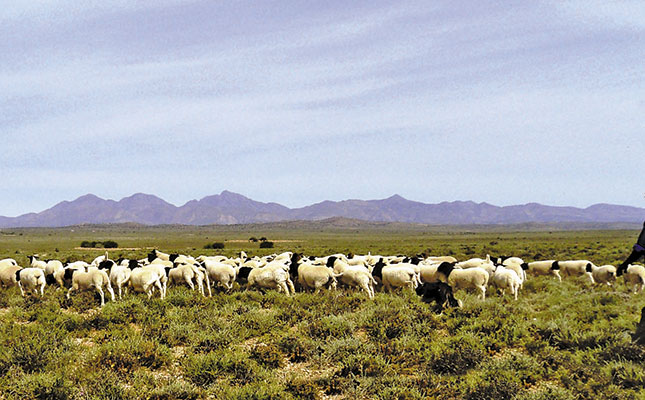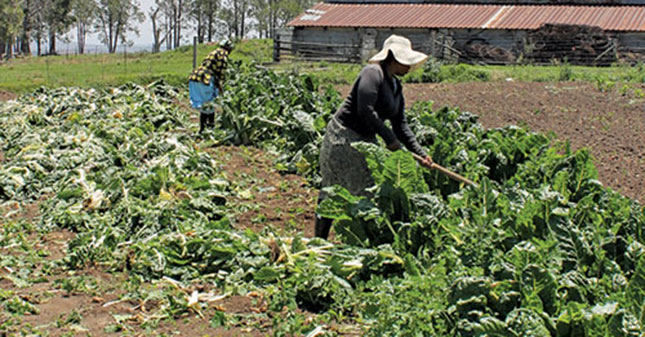
Photo: Roelof Bezuidenhout
What is the narrative about?
Nicoli Nattrass (NN): We discuss the historical roots of, and scientific evidence for, rival ‘jackal narratives’ about the problems posed by black-backed jackals for sheep farmers. With two sides to the story, the narrative is marked by conflict – farmers insist that jackal populations need to be suppressed, while environmentalists believe that lethal control is undesirable
and ineffective and that farmers should learn to live with these predators.
READ:Can marigolds control eelworm?
We say ecological science can be used on both sides. However, policy is as much shaped by values and politics as it is by science.
What’s the current state of the debate?
Beatrice Conradie (BC): Discussions about values remain important, but the competing, plausible ideas about jackal control suggest that further scientific studies could help in making policies that are acceptable to both sides. Fortunately, the jackal narrative has become less dogmatic. Many farmers agree with ecologists that jackals quickly re-populate areas and that lethal control is only part of the solution. And, while most argue that the old hunting clubs helped keep jackals under control, there’s growing interest in finding out precisely how effective hunting was, and can be.
Recent analysis of historic data found that killing predators was associated with higher levels of stock losses in subsequent years – a finding consistent with the environmental jackal narrative that hunting causes more jackals, hence greater future losses. But such studies are inconclusive because we do not know enough about the physical characteristics of the old farms and management practices.
Nor do we know the extent to which jackal territories overlapped boundaries.We need a complete ecological picture over a wide area to draw conclusions about the relationship between lethal control of jackals and stock losses. Environmentalists
remain in favour of holistic, ecologically sound options, but the fact that conservationists have resorted to lethal control in national parks has introduced a strong dose of humility into their narrative. We need to know more about the ecology of the jackal in order to limit the damage.
How did the age-old problem develop?
NN: Anecdotal information from farmers suggests that the ‘jackal problem’ re-emerged in the mid-1990s as a consequence of a number of social and economic changes. Early Cape governments placed bounties on predators, and the lions and hyenas
were eradicated from farm lands, yet jackal predation persisted. Government investigations in 1899 and the 1920s highlighted the jackal’s remarkable capacity to evade persecution, divisions between farmers– cattle farmers had no interest in controlling jackals and some crop farmers welcomed them because they controlled rodents – and the role played by unoccupied farms and forest reserves as “breeding grounds”.
Between 1914 and 1923, 317 787 bounties were paid but ultimately what appears to have reduced jackal numbers was the
widespread use of ‘jackal proof’ wire-mesh fences and co-ordinated hunting efforts within enclosed areas – the so-called ‘fence and clean-up’ approach. The spread of fencing and wind pumps transformed the technology of sheep farming, especially in the Karoo.
It allowed commercial farmers to switch away from the kraaling system, and for sheep to range freely in fenced camps supplied by artificial water sources. Bounties continued to be paid out over the following decades, but at stabilised and much lower levels, suggesting that the problem had been reduced. Eventually, the jackal recolonised farms as government policy changed away from subsidising predator control, farm employment contracted, and sheep farming became less economically and politically important.
What are the possible solutions?
BC: Studies of coyote control in the USA suggest that the impact of lethal control varies, sometimes impacting on wildlife or
livestock. The same is likely to be the case with jackals in South Africa. There have been some mitigation studies typically
showing that introducing guard dogs and other non-lethal methods lowers predation. But such studies, being at farm level, cannot speak to the issue of whether jackals were simply displaced onto neighbouring farms.
Ideally, we need a set of landscape-level studies that collect farm characteristics, management strategies, biodiversity indicators and jackal movements to address the many open questions. For example, we argue that the theory that the unselective hunting of jackal and caracal is the reason for the increase in the population of these species is based on a particular reading of the science of predator ecology rather than the history of predator control, or the experience of sheep farmers in the Karoo.
So, the environmental narrative has holes in it?
NN: The environmental jackal narrative rests on three pillars – a value judgement that persecuting jackals is cruel, an ecological claim that it is counterproductive, and a policy stance recommending that farmers use non-lethal means to protect their livestock. The NSPCA believes that control methods such as gin traps, poisons, hunting with dogs and denning are ‘inhumane (and) have no place in a progressive society’.
They go on to say that the ‘removal of damage-causing animals often leads to a vacuum being created, thereby allowing other animals of the same species to compete for this territory, most often increasing the intensity of preying on domestic animals and increasing the problem’.
Instead, the organisation supports the use of non-lethal and ethically acceptable options. The Landmark Foundation concurs, adding that the ‘best way to encourage a decrease in jackal and caracal numbers is to have stable and established family groups in areas’. This environmental jackal narrative draws on supportive scientific studies of coyotes which show that populations adapt to persecution and that farmers exercising lethal control may find themselves worse off as a result. The argument is that coyotes are territorial social animals where breeding is limited to the alpha pair, with subordinate animals
either dispersing to new territories or staying to help their parents raise pups.
Coyote advocates argue that hunting them is counterproductive because it fractures their social structure, thereby allowing
beta females to breed, while incentivising the remaining adults to hunt for larger food packages to feed the pups. This is a compelling narrative, but the argument that populations not subject to human-induced mortality pose less threat to livestock than persecuted populations is speculative.
Less is known about the black-back jackal than the coyote, though studies suggest clear similarities between these species. But even where compensatory breeding does not take place, the fact that young jackals typically disperse within a year up to 135km away from the natal den, implies that if a territory becomes vacant as a result of hunting, it will be filled almost immediately by a young and vigorously reproducing pair while the boundaries of the existing ranges are adjusted.
The success of fence and clean-up strategies indicates that control is possible. The environmental jackal narrative, however, conflates the ongoing presence of the jackal with failure to control it. The relationship between jackal numbers and food supply is important, too. Coyote populations increase and decline with food supply.
The same may be true of jackals. If they defend territories that are larger than necessary to sustain food supply, populations could expand where the available supply is sufficient – as long as dominant jackal pairs allow it. Research showing that jackals tolerate overlapping territories by juveniles and allow ‘commuters’ to cross their land suggests that such a scenario is possible.
Is the farmer’s voice heard?
BC: Unlike the environmental narrative, which starts with a vision of jackals and sheep farmers living in a balanced ecosystem which then is disturbed by hunting, the farmer narrative starts from the perspective of a farm. There are farmers who enjoy respect within the farming community for their research but as their work is not published, their expertise is often brushed aside by environmentalists who dismiss them as being ignorant of ‘the science’.
Farmers are open to new ideas, including farming in more ecologically sound ways and using ‘greener’ methods. This is one of the reasons the restrictions on night hunting caused a furore in the farming community – the alternative is far worse.
There are thus important areas of commonality between farmers and environmentalists on protecting biodiversity, but the relative value of protecting wildlife and livestock is contested. Many farmers feel that the suffering imposed by predators on their livestock is ignored by environmentalists, prompting them to engage directly with the public.
Published by the Centre for Social Science Research University of Cape Town 2013. This working paper can be downloaded from http://cssr.uct.ac.za/pub/wp/32
Email [email protected]
This article was originally published in the 21 March 2014 issue of Farmer’s Weekly.












